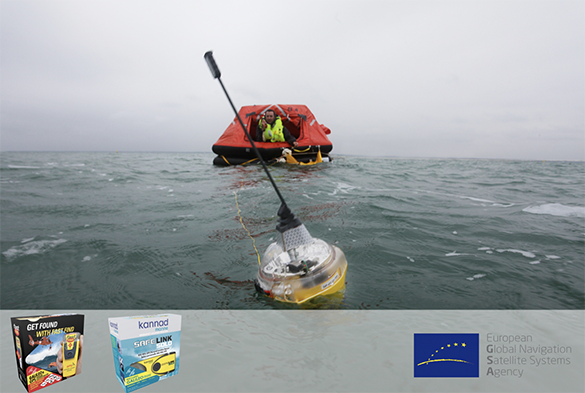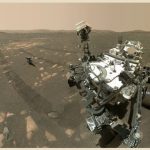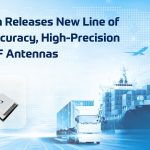The European Union’s Horizon 2020 HELIOS and its coordinator Orolia have announced the launch in Europe and the United States of an upgrade to its McMurdo FastFind 220 and Kannad SafeLink Solo personal location beacons (PLB) to include Galileo.
The PLBs are the world’s first to utilize Galileo’s capabilities and are the first in a series of new solutions coming from the EU-funded Helios project, led by Orolia, which was set up to leverage the power of Galileo. The launch follows approval from the U.S. Federal Communications Commission and continues Orolia’s innovation and leadership role in safety electronics, according to a press release on the European Global Navigation Satellite Systems Agency (GSA) website.
“We are doubly proud of this achievement. The fact that this is the world’s first Galileo-enabled personal location beacon is in itself a significant milestone,” said GSA Executive Director Carlo des Dorides. “That it comes as a result of a Horizon 2020 project managed by the GSA makes it even more satisfying. The GSA actively supports beacon manufacturers in implementing Galileo differentiators into their products and we are delighted to see these efforts deliver tangible results.”
Related Reading: Orolia Solutions Chosen for Advanced Search & Rescue Programs in Spain, Australia
Orolia multi-constellation-capable beacons work with a wider range of satellites, offering increased global coverage and supporting accelerated rescue. Location detection is more precise because the beacons receive coordinates from both Galileo and the GPS constellations, and signals can even be detected in difficult locations, such as canyons.
Pole to Pole Coverage
Galileo satellites make up part of the MEOSAR system, the next generation of the Cospas-Sarsat international Search and Rescue satellite system that has helped to save more than 43,000 lives since 1982. With the launch of four new satellites in July 2018, the Galileo constellation now consists of 26 satellites (24 with SAR payload), from a planned 30, with a target of 2020 for completion of the network. The system launched in December 2016, allowing technology with Galileo-enabled receivers to use signals provided by the constellation for positioning, navigation and timing.
“We are thrilled to be launching our upgraded PLBs in the European and U.S. markets,” said Chris Loizou, Vice President of Maritime at Orolia. “The combination of both Galileo and GPS GNSS capability means that our customers will benefit from coverage that spans from the North to the South Pole. We work tirelessly to push the boundaries of product innovation and, ultimately, to give people the best chance of being rescued in an emergency situation.”
The McMurdo FastFind and Kannad SafeLink PLBs are part of Orolia’s comprehensive search and rescue ecosystem and join the McMurdo SmartFind G8 and Kannad SafePro series emergency position-indicating radio beacons (EPIRBs) as the first Galileo-capable rescue beacons. Orolia’s McMurdo brand builds, integrates and tests products as part of a live search and rescue system. This ensures greater cohesion between distress signal transmission and reception so that beacon owners can feel confident that their signals will get to search and rescue authorities quickly.
Save Lives In The Air, At Sea and On Land
The HELIOS project aims at providing a complete range of next-generation beacons to the market including an Emergency Locator Transmitter (ELT), an Emergency Position Indicating Radiobeacon (EPIRB), a PLB and their associated antennas, all compliant with the Cospas-Sarsat international standards. These new distress beacons are fully compatible with the satellite-based SAR distress alert detection, MEOSAR (Medium Earth Orbit Search and Rescue System) and also Galileo.
As a global leader in SAR infrastructure and beacon manufacturing, Orolia is involved in specific working groups such as ICAO, EUROCAE, RTCA, RTCM and gathers the HELIOS members’ expertise in aircraft manufacturing, airline modifications, protective clothing design, as well as SAR operations with the final goal to save more lives through innovative solutions answering evolving market problems.






